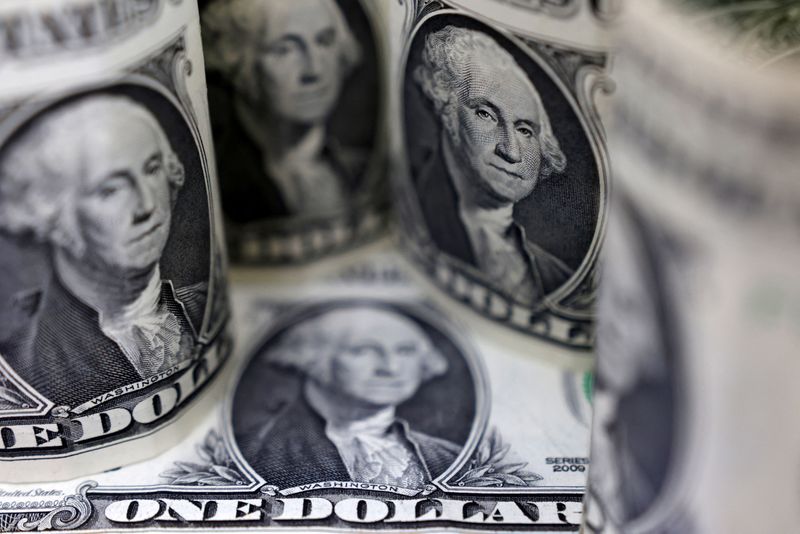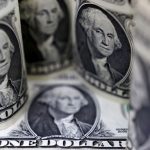NEW YORK (Reuters) – The dollar slipped against the euro on Monday, as the common currency recovered from the more than one-month lows hit last week amid political turmoil in Europe.
The euro was up 0.25% to $1.07305 on Monday, after touching a six-week low of $1.066775 last week following news of a snap parliamentary election in France.
European markets have been under pressure after President Emmanuel Macron called for the snap election after his ruling centrist party was trounced by Marine Le Pen’s eurosceptic National Rally in the European Parliament elections.
Investors have been contemplating the risk of a budget crisis at the heart of the euro area, as far-right and leftist parties gain momentum ahead of the French election, pressuring Macron’s centrist administration.
Le Pen sought to allay some of those fears over the weekend, saying she would not seek Macron’s resignation and that she is “respectful of institutions,” in an interview with Le Figaro.
Even after the French financial markets endured a brutal sell-off late last week, European Central Bank policymakers have no plans to discuss emergency purchases of French bonds, five sources told Reuters.
“As French markets have begun to stabilize a bit since last week, the euro has responded with a slight touch of recovery,” Helen Given, FX trader at Monex USA in Washington, said.
But Given said the trend remained in favor of the dollar.
“If U.S. retail sales come in weaker than expected tomorrow, as most data for the U.S. has been in the last few sessions, we could see a more substantial turnaround, but the underlying dynamic for the pair is driven very heavily by geopolitics at the moment,” she said.
U.S. import prices fell for the first time in five months in May. The unexpectedly benign report from the Labor Department on Friday, combined with other recent data showing tame inflation readings, has helped keep a September interest rate cut by the Federal Reserve on the table.
The dollar index, which tracks the U.S. currency against a basket of six others, was 0.2% lower at 105.35.
The Fed published updated projections last week that showed the median forecast from all 19 U.S. central bankers was for a single interest rate cut this year.
Philadelphia Fed President Patrick Harker said on Monday that if his economic forecast plays out, the Federal Reserve would be able to cut its benchmark interest rate once this year.
The pound rose 0.15% to $1.2707 on Monday, though it remained close to the one-month low of $1.26575 touched in the previous session as traders await a policy meeting by the Bank of England this week.
Britain’s inflation pressures still appear too hot for the Bank of England to cut rates at its meeting on Thursday, with a majority of economists polled by Reuters forecasting the first cut would not come until Aug. 1.
The yen remained pinned near a 34-year low against the dollar after the Bank of Japan on Friday pushed cuts to bond buying amounts. The dollar was last up 0.2% to 157.73 yen.
Traders remain on watch for signs that Japanese authorities might intervene to prop up the yen.
“All the fundamentals for the pair are in the favor of USD at the moment, and though some volatility does remain, the general trajectory has been more steady than we saw in March and April,” Monex’s Given said.

“I’d expect to see rhetoric from currency officials heat up around the 160 mark, but as it stands now it would take a lot for BoJ officials to finance another intervention – at a point, it might no longer be worth it,” she said.
The Mexican peso slipped 0.4% on Monday on concerns about the fallout from judicial reforms proposed by President-elect Claudia Sheinbaum, while other currencies in Latin America weakened as U.S. Treasury yields rose on stronger-than-expected data.
To read the full article, Click Here

